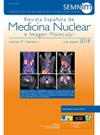Aplicación práctica de la imagen multimodal en la cardio-oncología en América Latina
IF 1.6
4区 医学
Q3 RADIOLOGY, NUCLEAR MEDICINE & MEDICAL IMAGING
Revista Espanola De Medicina Nuclear E Imagen Molecular
Pub Date : 2025-02-12
DOI:10.1016/j.remn.2024.500086
引用次数: 0
Abstract
Latin America is one of the regions in the world with the highest levels of overweight, dyslipidemia, and diabetes mellitus, which, together with smoking and high blood pressure, are common risk factors for cardiovascular and oncological diseases. Chemotherapy (CT) and radiotherapy (RT) have become two of the mainstays of treatment for several types of cancer. One of the most worrisome side effects generated by CT and RT is cardiotoxicity. There are several imaging techniques in cardiology that can inform the presence of underlying disease, but they differ in their availability and access to the masses, their accuracy and repeatability, all of which are important determinants of the applicability of these techniques in routine clinical practice. Thus, it is mandatory to promote a clinically effective and a cost-effective multimodality approach for risk stratification, diagnosis and management of cardiovascular diseases in oncologic patients. The purpose of this review is to inform cardiologists, oncologists, cardio-oncologists and imaging cardiologists on the cardiac imaging modalities that can be applied in patients with cancer, the differences among imaging techniques and recommendations on how to apply them in Latin America.
多模态成像在拉丁美洲心脏肿瘤学中的实际应用
拉丁美洲是世界上超重、血脂异常和糖尿病发病率最高的地区之一,这些疾病与吸烟和高血压一起是心血管疾病和肿瘤疾病的常见危险因素。化疗(CT)和放疗(RT)已成为几种癌症治疗的两大支柱。CT和RT产生的最令人担忧的副作用之一是心脏毒性。心脏病学中有几种成像技术可以告知潜在疾病的存在,但它们在可获得性和大众可及性、准确性和可重复性方面存在差异,所有这些都是这些技术在常规临床实践中适用性的重要决定因素。因此,必须推广一种临床有效且具有成本效益的多模式方法,以对肿瘤患者的心血管疾病进行风险分层、诊断和管理。本综述的目的是告知心脏病专家、肿瘤学家、心脏肿瘤学家和心脏病成像专家可应用于癌症患者的心脏成像模式、成像技术之间的差异以及如何在拉丁美洲应用这些成像技术的建议。
本文章由计算机程序翻译,如有差异,请以英文原文为准。
求助全文
约1分钟内获得全文
求助全文
来源期刊

Revista Espanola De Medicina Nuclear E Imagen Molecular
RADIOLOGY, NUCLEAR MEDICINE & MEDICAL IMAGING-
CiteScore
1.10
自引率
16.70%
发文量
85
审稿时长
24 days
期刊介绍:
The Revista Española de Medicina Nuclear e Imagen Molecular (Spanish Journal of Nuclear Medicine and Molecular Imaging), was founded in 1982, and is the official journal of the Spanish Society of Nuclear Medicine and Molecular Imaging, which has more than 700 members.
The Journal, which publishes 6 regular issues per year, has the promotion of research and continuing education in all fields of Nuclear Medicine as its main aim. For this, its principal sections are Originals, Clinical Notes, Images of Interest, and Special Collaboration articles.
 求助内容:
求助内容: 应助结果提醒方式:
应助结果提醒方式:


